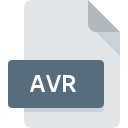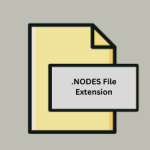.SD2 File Extension

Sound Designer II File
| Developer | Avid Technology |
| Popularity | |
| Category | Audio Files |
| Format | .SD2 |
| Cross Platform | Update Soon |
What is an SD2 file?
.SD2 file extension represents a file format commonly known as Sound Designer II, primarily used for storing audio data.
Initially developed by Digidesign, now part of Avid Technology, the format was widely used in digital audio workstations (DAWs) and other audio editing software during the early days of digital audio production.
The .SD2 format was particularly popular in the Macintosh community due to its robust features and compatibility with the Mac OS file system.
The primary function of these files was to store sound data, such as musical compositions, sound effects, and audio samples, in a digitized format that could be easily manipulated, processed, and integrated into multimedia projects.
More Information.
The history of the .SD2 file dates back to the late 1980s when Digidesign introduced the Sound Designer II software.
The initial purpose of the .SD2 file was to provide a reliable and flexible container for digital audio data that could be used in conjunction with the Sound Designer II software.
This format was designed to support multiple audio channels, various sampling rates, and bit depths, making it versatile for different types of audio projects.
The .SD2 format quickly gained popularity among audio professionals due to its seamless integration with Macintosh systems and its support for high-quality audio.
Origin Of This File.
The .SD2 file format originated from the Sound Designer II software, an advanced audio editing program developed by Digidesign. The software emerged as a revolutionary tool for audio editing, offering unprecedented capabilities for sound manipulation and production.
The Sound Designer II software and the associated .SD2 file format were conceived to address the growing demand for high-quality digital audio in the professional music and post-production industries.
The development of this format marked a significant milestone in the evolution of digital audio, facilitating complex audio editing tasks and contributing to the high fidelity of sound in multimedia productions.
File Structure Technical Specification.
The structure of a .SD2 file is intricate, and designed to encapsulate detailed audio data efficiently. The file typically consists of a header section, which contains metadata about the audio content, such as the number of channels, sample rate, bit depth, and the length of the audio.
Following the header, the data section stores the actual audio samples. .SD2 files are known for their use of a unique “resource fork” in the Macintosh file system, which stores metadata and index information separately from the actual audio data, allowing for more efficient file operations and compatibility with Mac OS features.
How to Convert the File?
Converting .SD2 files to other audio formats can be necessary for compatibility with various audio software and devices.
Several audio conversion tools and software can perform this task. Popular DAWs like Pro Tools, Logic Pro, and Audacity might offer native support for importing and converting .SD2 files.
Third-party audio conversion software can also handle the conversion process, offering options to convert .SD2 files to common formats like WAV, AIFF, or MP3.
It’s important to choose a conversion tool that preserves the quality of the audio and supports the specific parameters of the .SD2 file.
Advantages And Disadvantages.
The .SD2 format has its set of advantages and disadvantages. One of the primary advantages is its high compatibility with Macintosh systems, making it a preferred choice for audio professionals using Mac OS.
The format’s support for high-quality audio and its robustness in handling complex audio data are also significant benefits.
The .SD2 format has some limitations, such as its decreasing compatibility with modern DAWs and operating systems.
The unique structure of the files, especially the reliance on the resource fork, can pose challenges in file management and interoperability with non-Mac systems.
How to Open SD2?
Open In Windows
- Conversion: Convert the .SD2 file to a more compatible format like WAV or MP3 using audio conversion software.
- Audio Software: Use audio editing software that supports .SD2 files, if available. Software like Audacity (with additional plugins if necessary) might open .SD2 files directly.
Open In Linux
- Audio Conversion Tools: Use tools like Audacity or FFmpeg to convert the .SD2 files to a universally supported format (e.g., WAV, MP3).
- Command Line Tools: Advanced users can utilize command-line tools like FFmpeg to convert .SD2 files.
Open In MAC
- Legacy Software: Older versions of macOS with compatible software (like older versions of Logic Pro or Soundtrack Pro) might open .SD2 files natively.
- Conversion: Use audio conversion tools to convert the .SD2 files to a more modern format like WAV or AIFF.
Open In Android
Open In IOS
Open in Others
Directly opening or converting .SD2 files on Android and iOS devices can be challenging due to the lack of native support and the specific requirements of the .SD2 format. You can:
- Convert on a Computer: First, convert the .SD2 files to a compatible format (like MP3 or WAV) on a computer using the methods described above.
- Transfer Files: Transfer the converted audio files to your Android or iOS device using a cable, cloud storage, or other file transfer methods.
- Use Audio Players: Open and play the converted files using any standard audio player app on your Android or iOS device.













